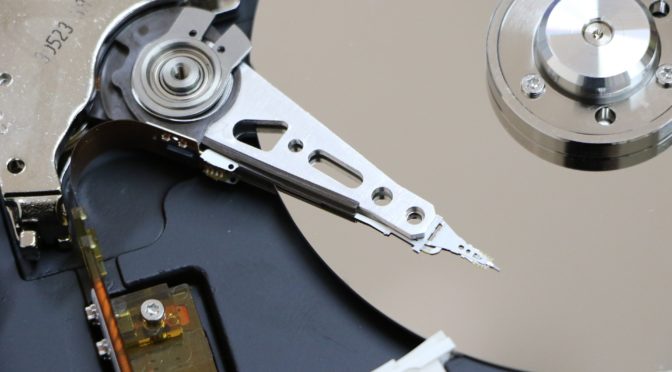We all know the story of the Emperor’s New Clothes. In Hans Christian Anderson’s telling of the classic tale we have some unscrupulous cloth vendors who convince the emperor that they have clothes made from a fabric with the magical property of only being visible to people who are fit for their positions. The emperor, not being able to see the clothes, decides to buy them because he fears people finding out that he cannot see them. Everyone in the kingdom pretends to see them as well – all sharing the same fear. It is a brilliant sales tactic because it puts everyone on the same team: the cloth sellers, the emperor, the people in the street all share a common goal that requires them to all maintain the same lie. Only when a little boy who cares naught about his status in society but only about the truth points out that the emperor is naked is everyone free to admit that they don’t see the clothes either.
And this brings us to the storage market today. Today we have storage vendors desperate to sell solutions of dubious value and buyers who often lack the confidence in their own storage knowledge to dare to question the vendors in front of management or who simply have turned to vendors to make their IT decisions on their behalf. This has created a scenario where the vendor confidence and industry uncertainty has engendered market momentum causing the entire situation to snowball. The effect is that using big, monolithic and expensive storage systems is so accepted today that often systems are purchased without any thought at all. They are essentially a foregone conclusion!
It is time for someone to point at the storage buying process and declare that the emperor is, in fact, naked.
Don’t get me wrong. I certainly do not mean to imply that modern storage solutions do not have value. Most certainly they do. Large SAN and NAS shared storage systems have driven much technological development and have excellent use cases. They were not designed without value, but they do not apply to every scenario.
The idea of the inverted pyramid design, the overuse of SANs where they do not apply, came about because they are high profit margin approaches. Manufacturers have a huge incentive to push these products and designs because they do much to generate profits. SANs are one of the most profit-bearing products on the market. This, in turn, incentivizes resellers to push SANs as well, both to generate profits directly through their sales but also to keep their vendors happy. This creates a large amount of market pressure by which everyone on the “sales” side of the buyer / seller equation has massive pressure to convince you, the buyer, that a SAN is absolutely necessary. This is so strong of a pressure, the incentives so large, that even losing the majority of potential customers in the process is worth it because the margins on the one customer that goes with the approach is generally worth losing many others.
Resellers are not the only “in between” players with incentive to see large, complex storage architectures get deployed. Even non-reseller consultants have an incentive to promote this approach because it is big, complex and requires, on average, far more consulting and support than do simpler system designs. This is unlikely to be a trivial number. Instead of a ten hour engagement, they may win a hundred hours, for example, and for consultants those hours are bread and butter.
Of course, the media has incentive to promote this, too. The vendors provide the financial support for most media in the industry and much of the content. Media outlets want to promote the design because it promotes their sponsors and they also want to talk about the things that people are interested in and simple designs do not generate a lot of readership. The same problems that exist with sensationalist news: the most important or relevant news is often skipped so that news that will gather viewership is shown instead.
This combination of factors is very forceful. Companies that look to consultants, resellers and VARs, and vendors for guidance will get a unanimous push for expensive, complex and high margin storage systems. Everyone, even the consultants who are supposed to be representing the client have a pretty big incentive to let these complex designs get approved because there is just so much money potentially sitting on the table. You might get paid one hour of consulting time to recommend against overspending, but might be paid hundreds of hours for implementing and supporting the final system. That’s likely tens of thousands of dollars difference, a lot of incentive, even for the smallest deployments.
This unification of the sales channel and even the front line of “protection” has an extreme effect. Our only real hope, the only significant one, for someone who is not incentivized to participate in this system is the internal IT staff themselves. And yet we find very rarely that internal staff will stand up to the vendors on these recommendations or even produce them themselves.
There are many reasons why well intentioned internal IT staff (and even external ones) may fail to properly assess needs such as these. There are a great many factors involved and I will highlight some of them.
- Little information in the market. Because no company makes money by selling you less, there is almost no market literature, discussions or material to assist in evaluating decisions. Without direct access to another business that has made the same decision or to any consultants or vendors promoting an alternative approach, IT professionals are often left all alone. This lack of supporting experience is enough to cause adequate doubt to squash dissenting voices.
- Management often prefers flashy advertising and the word of sales people over the opinions of internal staff. This is a hard fact, but one that is often true. IT professionals often face the fact that management may make buying decisions without any technical input whatsoever.
- Any bid process immediately short circuits good design. A bid would have to include “storage” and SAN vendors can easily bid on supplying storage while there is no meaningful way for “nothing” to bid on it. Because there is no vendor for good design, good design has no voice in a bidding or quote based approach.
- Lack of knowledge. Often dealing with system architecture and storage concerns are one off activities only handled a few times over an entire career. Making these decisions is not just uncommon, it is often the very first time that it has ever been done. Even if the knowledge is there, the confidence to buck the trend easily is not.
- Inexperience in assessing risk and cost profiles. While these things may seem like bread and butter to IT management, often the person tasked with dealing with system design in these cases will have no training and no experience in determining comparative cost and risk in complex systems such as these. It is common that risk goes unidentified.
- Internal staff often see this big and costly purchase as a badge of honour or a means to bragging rights. Excited to show off how much they were able to spend and how big their new systems are. Everyone loves gadgets and these are often the biggest, most expensive toys that we ever touch in our industry.
- Internal staff often have no access to work with equipment of this type, especially SANs. Getting a large storage solution in house may allow them to improve their resume and even leverage the experience into a raise or, more likely, a new job.
- Turning to other IT professionals who have tackled similar situations often results in the same advice as from sales people. This is for several reasons. All of the reasons above, of course, would have applied to them plus one very strong one – self preservation. Any IT professional that has implemented a very costly system unnecessarily will have a lot of incentive to state that they believe that the purchase was a good one. Whether this is irrational “reverse rationalization” – the trait where humans tend to apply ration to a decision that lacked ration when originally made, because they fear that their job may be in jeopardy if it was found out what they had done or because they have not assessed the value of the system after implementation; or even possibly because their factors were not the same as yours and the design was applicable to their needs.
The bottom line is that basically everyone, no matter what role they play, from vendors to sales people to those that do implementation and support to even your friends in similar job roles to strangers on Internet forums, all have big incentives to promote costly and risky storage architectures in the small and medium business space. There is, for all intents and purposes, no one with a clear benefit for providing a counter point to this marketing and sales momentum. And, of course, as momentum has grown the situation becomes more and more entrenched with people even citing the questioning of the status quo and asking critical questions as irrational or reckless.
As with any decision in IT, however, we have to ask “does this provide the appropriate value to meet the needs of the organization?” Storage and system architectural design is one of the most critical and expensive decisions that we will make in a typical IT shop. Of all of the things that we do, treating this decision as a knee-jerk, foregone conclusion without doing due diligence and not looking to address our company’s specific goals could be one of the most damaging that we make.
Bad decisions in this area are not readily apparent. The same factors that lead to the initial bad decisions will also hide the fact that a bad decision was made much of the time. If the issue is that the solution carries too much risk, there is no means to determine that better after implementation than before – thus is the nature of risk. If the system never fails we don’t know if that is normal or if we got lucky. If it fails we don’t know if this is common or if we were one in a million. So observation of risk from within a single implementation, or even hundreds of implementations, gives us no statistically meaningful insight. Likewise when evaluating wasteful expenditures we would have caught a financial waste before the purchase just as easily as after it. So we are left without any ability for a business to do a post mortem on their decision, nor is there an incentive as no one involved in the process would want to risk exposing a bad decision making process. Even companies that want to know if they have done well will almost never have a good way of determining this.
What makes this determination even harder is that the same architectures that are foolish and reckless for one company may be completely sensible for another. The use of a SAN based storage system and a large number of attached hosts is a common and sensible approach to controlling costs of storage in extremely large environments. Nearly every enterprise will utilize this design and it normally makes sense, but is used for very different reasons and goals than apply to nearly any small or medium business. It is also, generally, implemented somewhat differently. It is not that SANs or similar storage are bad. What is bad is allowing market pressure, sales people and those with strong incentives to “sell” a costly solution to drive technical decision making instead of evaluating business needs, risk and cost analysis and implementing the right solution for the organization’s specific goals.
It is time that we, as an industry, recognize that the emperor is not wearing any clothes. We need to be the innocent children who point, laugh and question why no one else has been saying anything when it is so obvious that he is naked. The storage and architectural solutions so broadly accepted benefit far too many people and the only ones who are truly hurt by them (business owners and investors) are not in a position to understand if they do or do not meet their needs. We need to break past the comfort provided by socially accepted plausible deniability or understanding, or culpability for not evaluating. We must take responsibility for protecting our organizations and provide solutions that address their needs rather than the needs of the sales people.
For more information see: When to Consider a SAN and The Inverted Pyramid of Doom


